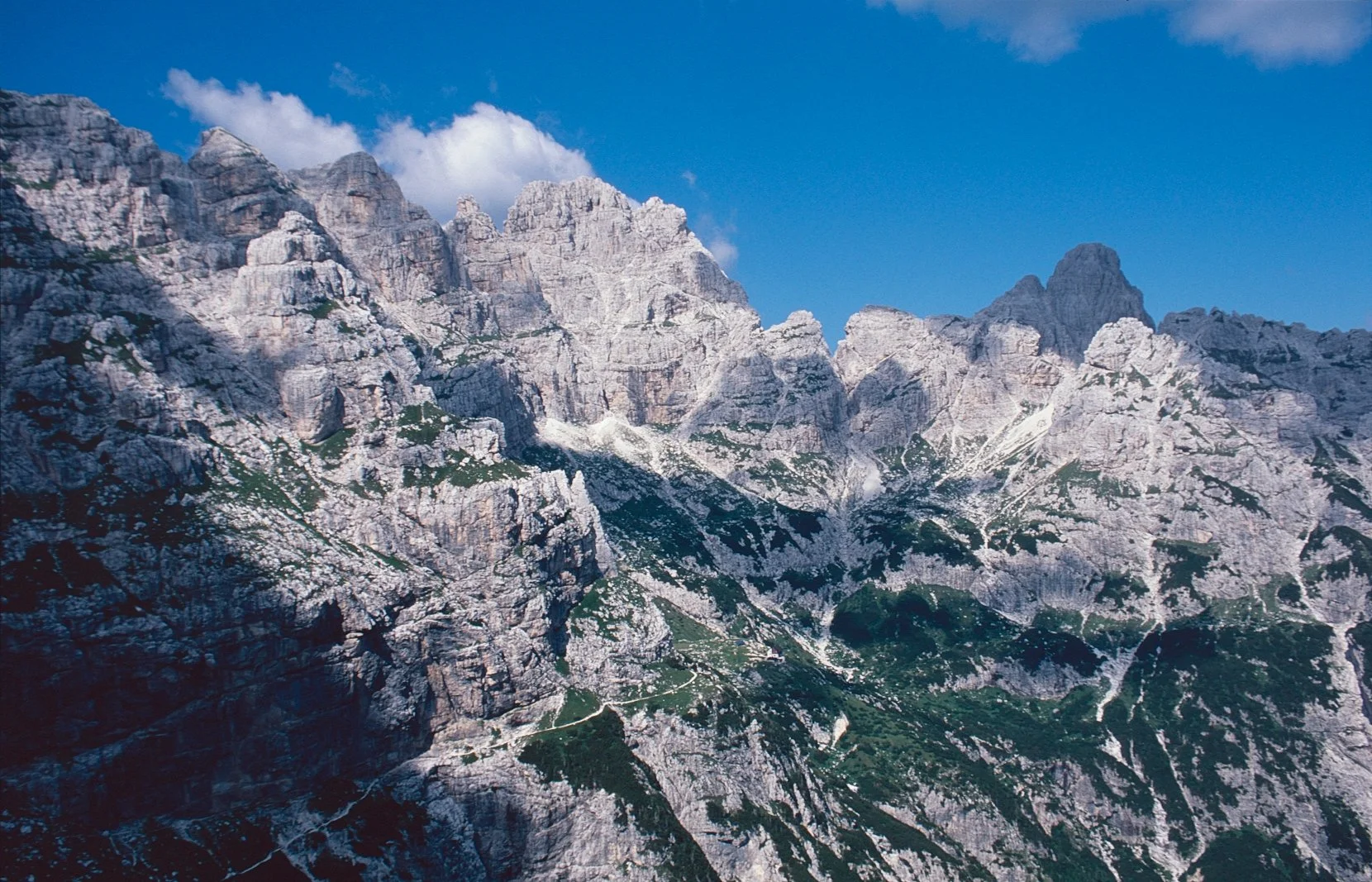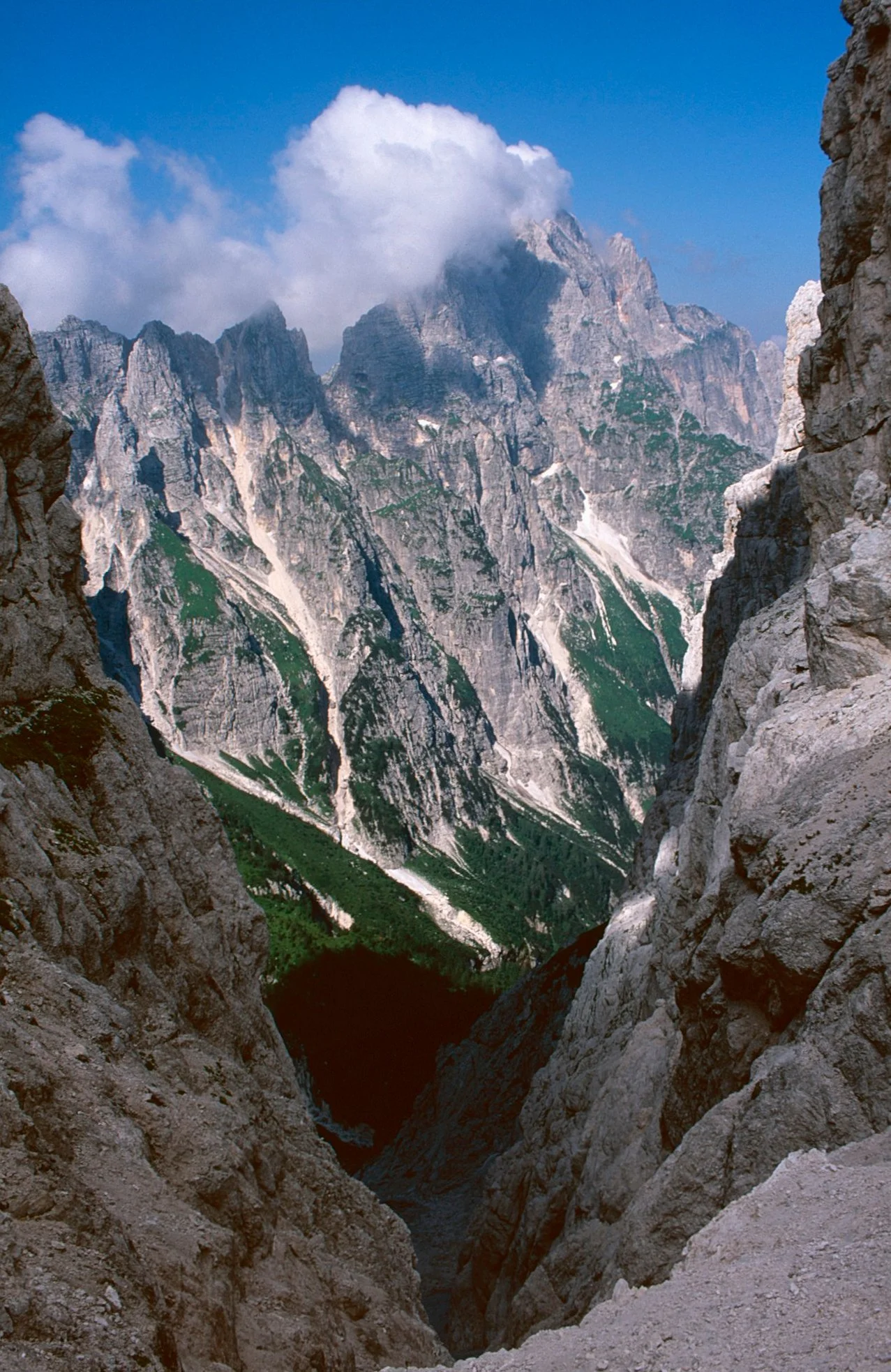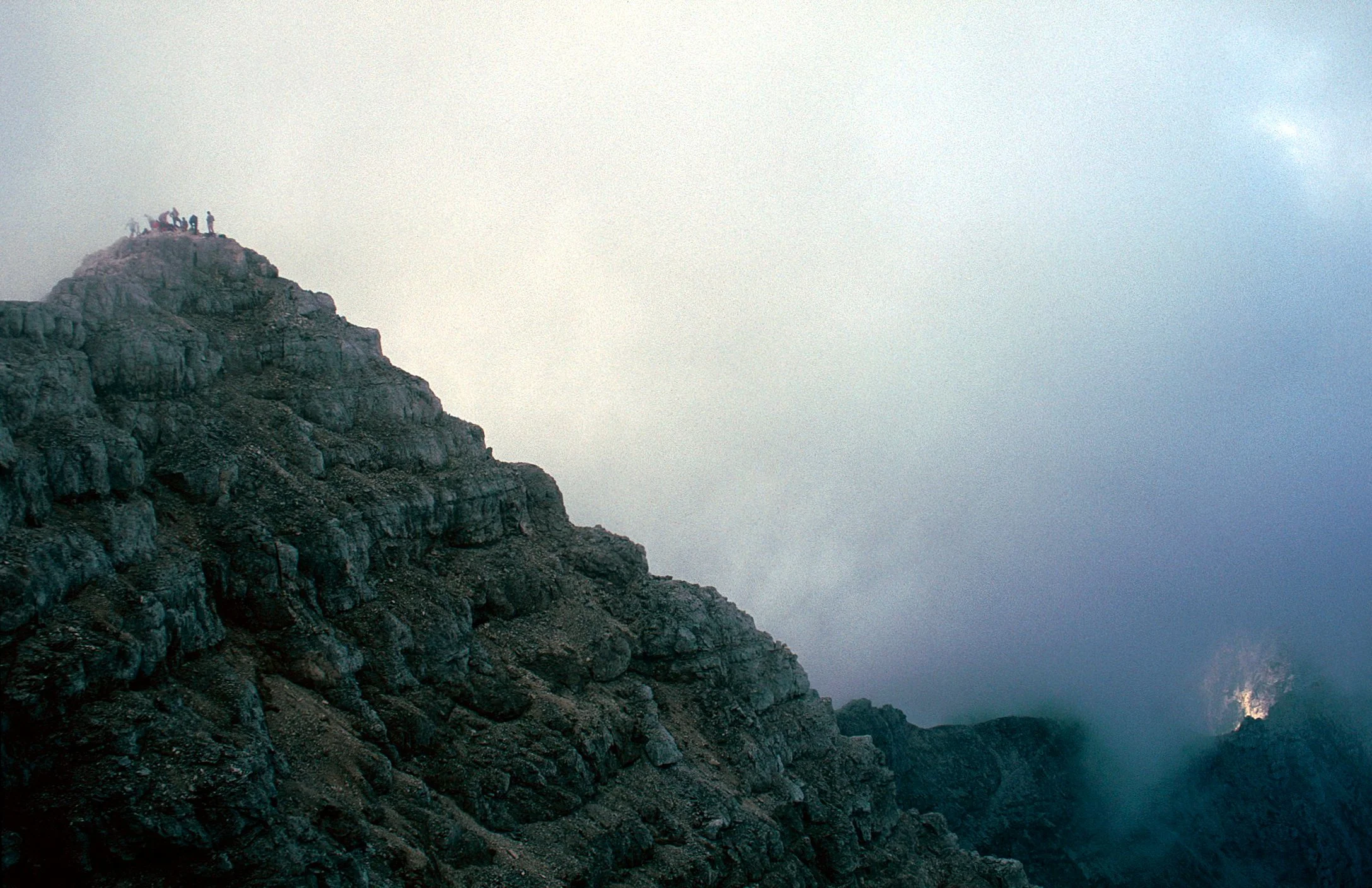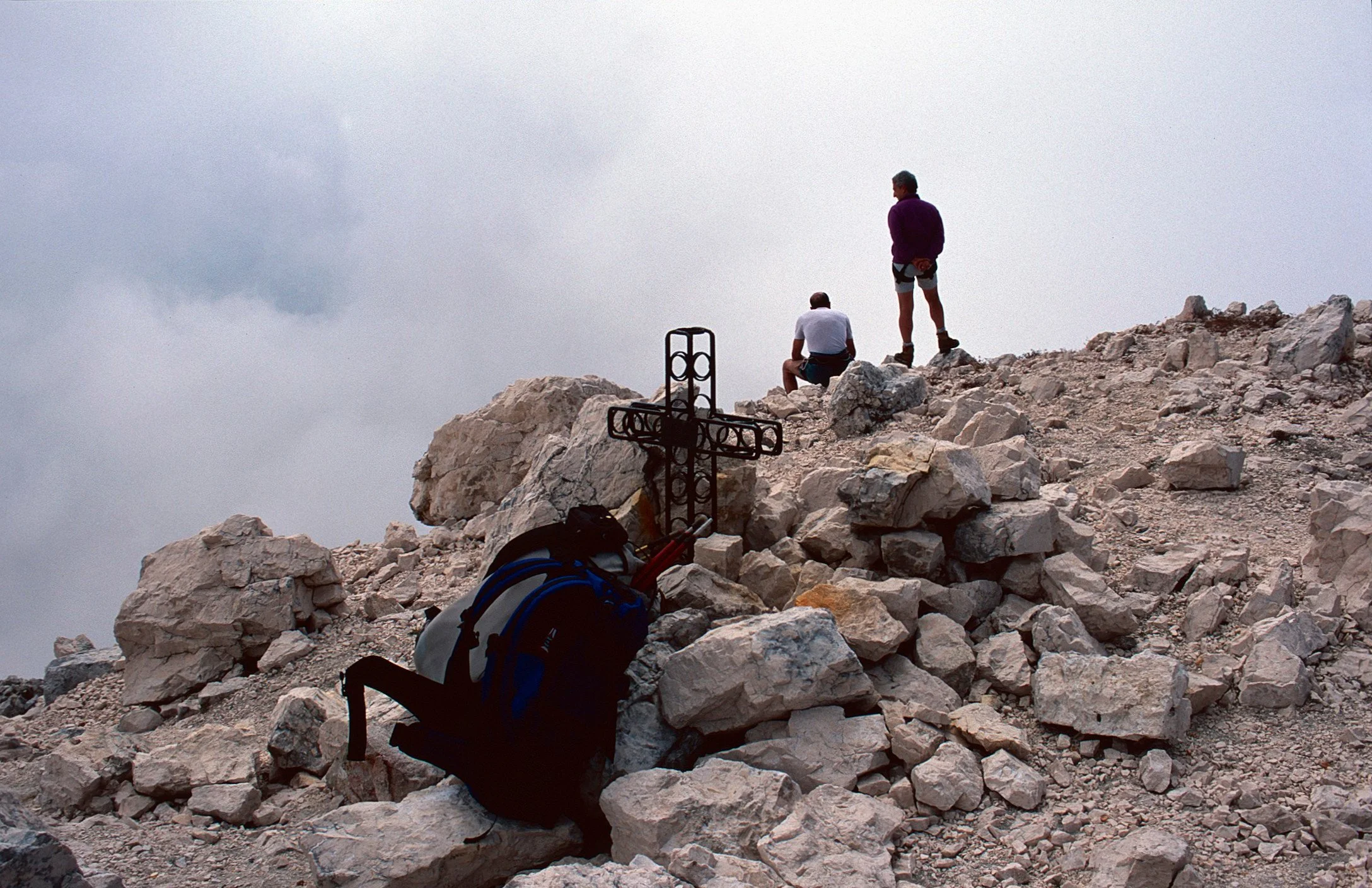Jôf Fuart and the Ledge of the Gods, Julian Alps, Italy
/The day began at a mountain refuge, Rifugio Corsi, an easy but spectacular 2 or 3 hours’ walk from the ski resort of Sella Nevea in the Julian Alps/Alpi Giulie, in north-eastern Italy.
rifugio corsi sits in the green just to the right of centre in this view from Passo degli Scalini, on the approach from Sella Nevea. The peaks are (from R to L) the shaded Cima del Vallone (2368 metres), ‘smoking’ Cima di Riofreddo (2507 metres) and the three towers of the Madri dei Camosci, all around 2500 metres. The closer bulk on the left with its own lower tower, Campanile di Villaco (2247 metres), is CimE Castrein.
Looking up the route to Forcella LAvinal dell’Orso
The previous night in the rifugio I had met a couple from Varese who were planning to attempt a via ferrata, Sentiero Anita Goitan, which traverses quite high up on the peaks in the first photo, the next day. Could I join them? Of course, but I would need some equipment. The gestore of the hut kindly lent me a helmet, a harness and a couple of slings and carabiners and I was all set.
From the hut, the route first climbs steeply to reach the crest above at a gap called Forcella Lavinal dell’Orso. This is where Sentiero Goitan begins. It then traverses the south-east side of Cime Castrein to reach an even more precipitous gap, Forcella Mosè. The narrow track called for a steady foot but no particular technical ability. Sections of it are protected by cables, though occasionally a ring-bolt had pulled out of the rock and dangled on the end of the cable, which made you question the level of protection they offered.
‘Jôf’ is a local word for ‘mountain’, Friulian or German in origin. From Forcella Mosè we could look north-west along a serrated ridgetop to Jôf di Montasio, the highest peak in the Italian part of the Julian Alps. (Only Triglav, across the border in Slovenia, is higher.)
More traversing then led to a straightforward marked path to the summit of Jôf Fuart, the next-highest peak in the range after Montasio. This side trip was the day’s next objective.
The next section of Sentiero Goitan is known as the Cengia degli Dei, or ‘Ledge of the Gods’. It traverses the southern slopes of the Madri dei Camosci (‘Mothers of the Chamois’) on a ledge that is sometimes a couple of metres wide and sometimes barely a ledge at all. We used the cable as a handrail at several points and, with chamois bounding about above us and dislodging the odd stone, I was glad to be wearing a helmet.
Jôf di Montasio (2752 metres, under cloud) from Forcella Mosè. The gully below is a ski-mountaineering route in winter.
Approaching the top of Jôf Fuart (2666 metres)
My companions from Varese by the summit cross, Jôf Fuart
Chamois (camosci) in their environment, and Rifugio Corsi below
on the Cengia degli Dei, or Ledge of the Gods
USing the fixed cable
About halfway along the ledge is a logbook in a metal case, like a summit log for a route with no summit, where we recorded our presence. Back in the rifugio at the end of the day, I looked through a special Julian Alps issue of the Italian mountain magazine Alp containing an article and some spectacular photographs from the first and, to that date, the only traverse of the Ledge of the Gods in winter.









